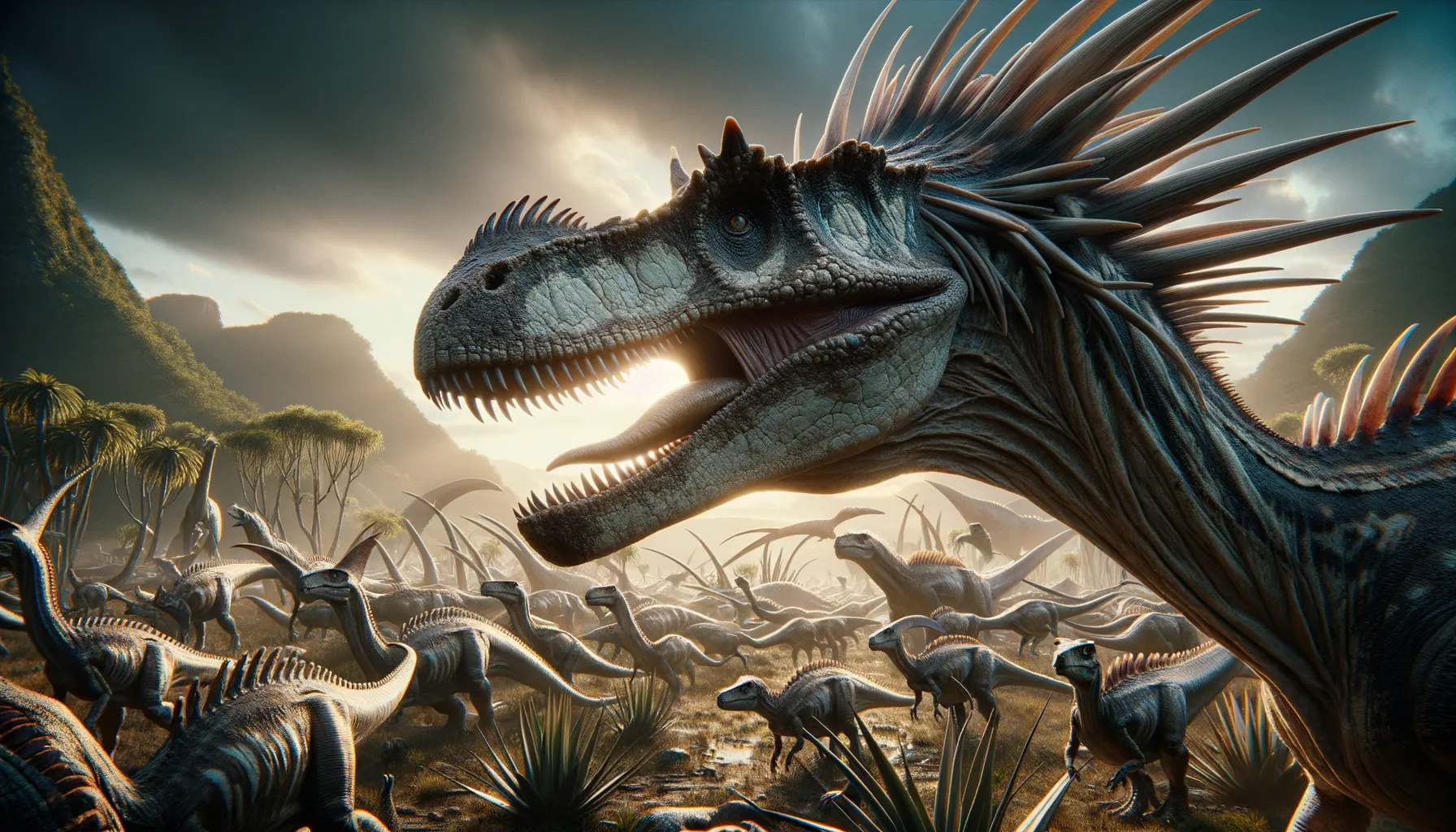
Dracorex
The spiky, dragon-like dinosaur wonder!
Period
Cretaceous
Length
Around 4 meters long.
Height
Approximately 1.8 meters tall.
Weight
About 100 kilograms.
Dracorex is a unique dinosaur known for its dragon-like appearance, with a spiky, flat skull and long muzzle. It roamed areas of North America during the Late Cretaceous period. As a plant-eater, it lived in herds, which provided safety in numbers from predators. Its unusual features and small size often capture the imagination of dinosaur enthusiasts, making it a popular figure in paleontological discussions.
Diet
Dracorex was an herbivore, primarily feeding on the abundant plant life available during the Late Cretaceous period. Its diet would have consisted of ferns, cycads, and other low-lying flora, requiring it to forage frequently.
Hunting
Being a herbivore, Dracorex did not engage in hunting but instead foraged for plants. Its survival depended on keen awareness to avoid being hunted by larger predators prevalent during its time.
Environmental challenges
Dracorex faced challenges from changes in climate which could affect plant life availability. Additionally, it had to navigate threats from large predators in its environment. The shifting landscape of the Late Cretaceous provided both dangers and opportunities for adaptation.
Speed
Likely moderate due to its small size.
Lifespan
Perhaps 20 to 30 years, typical for similar herbivores.
First discovery
Discovered in South Dakota, 2006.
Fun Facts
- Dracorex's full name is Dracorex hogwartsia, inspired by the Harry Potter books, meaning 'dragon king of Hogwarts'.
- It was discovered in the Hell Creek Formation in South Dakota, a rich fossil bed where many dinosaur species have been found.
- Dracorex is known for its dragon-like appearance, with a spiky skull and long snout that make it unique among dinosaurs.
- Paleontologists originally thought Dracorex was a distinct species, but some now believe it might be a juvenile form of the Pachycephalosaurus.
- The dinosaur lived during the Late Cretaceous period, which was around 66 to 100 million years ago.
- Dracorex's skull has bumps, lumps, and spikes, leading some to speculate it might have been for display or defense purposes.
- Dracorex was a plant-eater, likely feeding on the rich vegetation available during its time.
Growth and Development
Dracorex likely grew at a steady pace typical of herbivorous dinosaurs, reaching full size over several years. Its unique skull features, such as spikes, developed as it matured, which may have been used in social or defensive roles. Juveniles would have relied on their herd for protection until reaching maturity.
Habitat
Dracorex inhabited forested environments with abundant foliage, allowing it to feed on low-lying plants. These areas provided both food resources and cover from predators. The complexity of its habitat would have influenced its social structures and foraging patterns.
Interaction with other species
As a plant-eater, Dracorex primarily interacted with other herbivores and shared its space with various dinosaurs and prehistoric fauna. It faced constant threats from predators, requiring effective communication and cooperation within its herd for survival. The presence of mutualistic species could have contributed to a balanced ecosystem.
Natural lifespan
In the wild, Dracorex might have lived up to 30 years.
Reproduction
Dracorex, like many other dinosaurs, likely laid eggs in nests constructed within safe, hidden environments. After laying eggs, parental roles may have involved guarding nests or young hatchlings. The survival of offspring depended heavily on protecting them from predators and environmental threats until they could join the herd.
Social behaviour
Dracorex was likely a social animal, living in herds for protection and efficient foraging. Herds would have provided security and enhanced communication against the threat of predator attacks. Social dynamics within the herd may have included establishing hierarchies or relationships through specific behavioral displays.
Fossil locations
Fossils of Dracorex have primarily been found in North America, particularly in the Hell Creek Formation in South Dakota. These discoveries offer insights into the diverse range of species during the Cretaceous period. Fossil evidence has helped scientists reconstruct its physical appearance and understand its ecological role.
